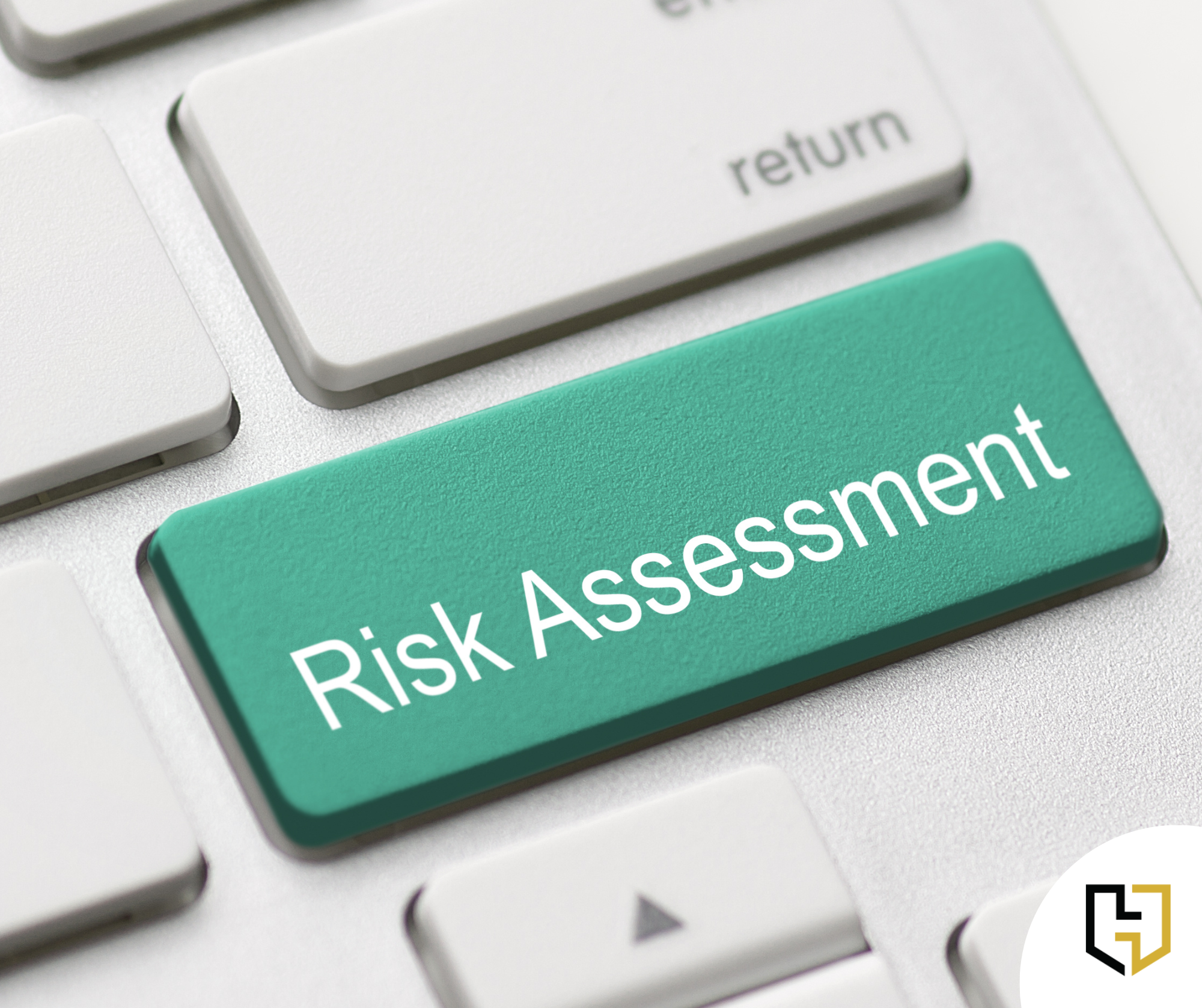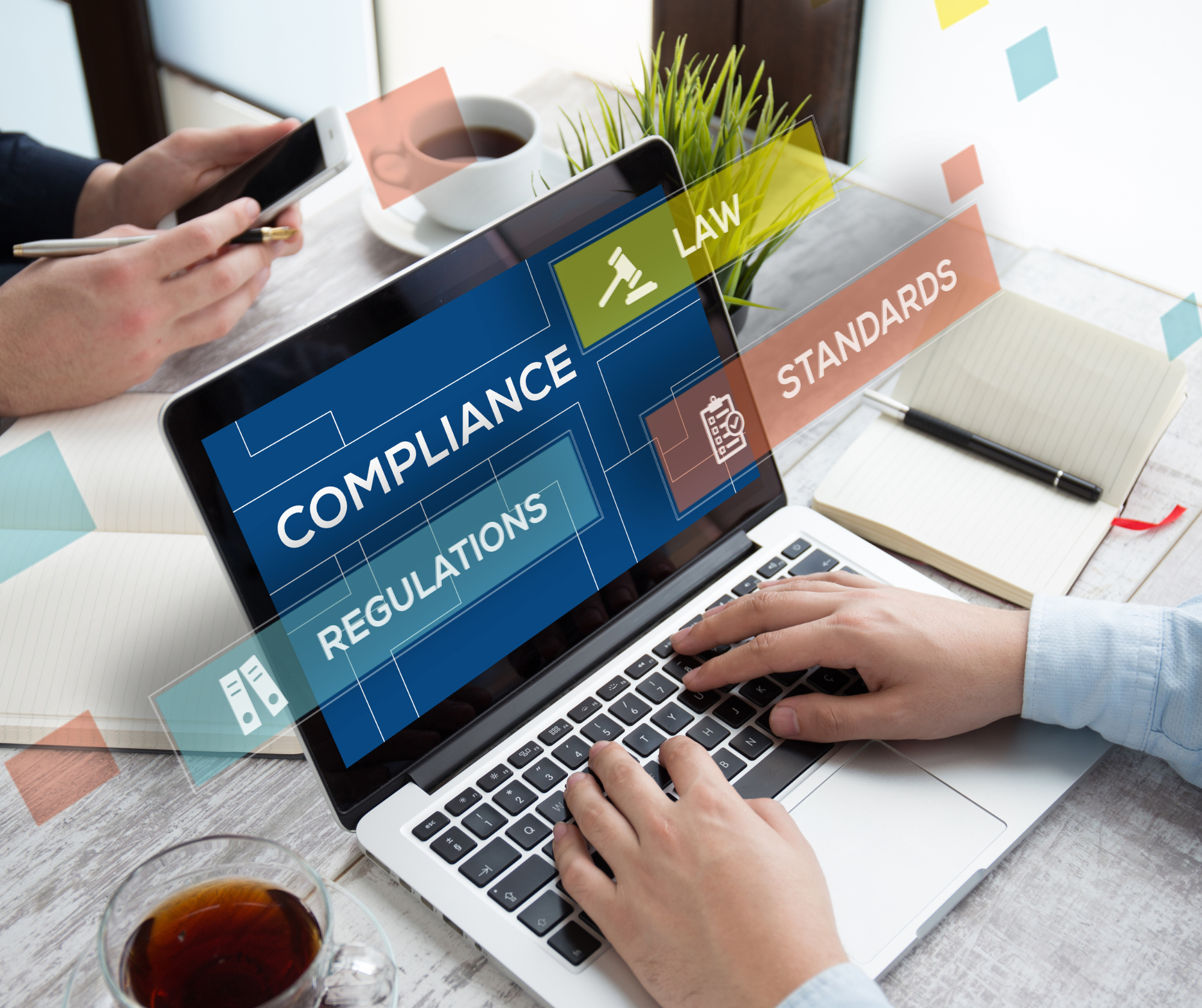Cybersecurity has become a critical concern for organizations of all sizes. Conducting a thorough cybersecurity audit is essential to protect sensitive data, ensure compliance with regulations, and maintain the trust of your clients and stakeholders. In this blog, we’ll guide you through the steps to conduct an effective cybersecurity audit for your organization. What is a Cybersecurity Audit? A cybersecurity audit is a comprehensive review of your organization’s information systems, policies, and procedures to identify vulnerabilities and ensure that your cybersecurity measures are robust and effective. This process helps to pinpoint weaknesses, assess risks, and implement strategies to enhance your security posture. Why is a Cybersecurity Audit Important? Risk Identification and Mitigation: Identifies potential threats and vulnerabilities, allowing you to take proactive measures to mitigate them. Regulatory Compliance: Ensures compliance with industry regulations and standards such as GDPR, HIPAA, and ISO 27001. Data Protection: Protects sensitive data from breaches, ensuring the confidentiality, integrity, and availability of information. Reputation Management: Maintains the trust of customers, partners, and stakeholders by demonstrating a commitment to cybersecurity. Steps to Conduct a Cybersecurity Audit 1. Define the Scope and Objectives Before starting the audit, clearly define its scope and objectives. Determine which systems, networks, and processes will be included. Establish specific goals, such as identifying vulnerabilities, assessing the effectiveness of current security measures, and ensuring compliance with regulations. 2. Assemble Your Audit Team Create a team of skilled professionals to conduct the audit. This team should include cybersecurity experts, IT personnel, and representatives from various departments. Consider hiring external auditors for an unbiased perspective. 3. Conduct a Risk Assessment Identify potential risks and vulnerabilities within your organization. This involves: Asset Inventory: Compile a comprehensive list of all hardware, software, and data assets. Threat Identification: Identify potential threats, such as malware, phishing attacks, and insider threats. Vulnerability Assessment: Evaluate existing vulnerabilities in your systems and processes. 4. Review Security Policies and Procedures Examine your organization’s security policies and procedures to ensure they are up-to-date and effective. This includes: Access Controls: Assess who has access to sensitive data and systems. Incident Response Plan: Review your plan for responding to security incidents. Employee Training: Evaluate the effectiveness of cybersecurity training programs. 5. Perform Technical Testing Conduct technical tests to identify vulnerabilities in your systems and networks. This may include: Penetration Testing: Simulate attacks to identify weaknesses. Vulnerability Scanning: Use automated tools to scan for known vulnerabilities. Configuration Review: Ensure systems are configured securely and according to best practices. 6. Analyze and Report Findings Analyze the data collected during the audit and compile a detailed report of your findings. The report should include: Identified Risks and Vulnerabilities: A list of all identified risks and vulnerabilities. Impact Assessment: An assessment of the potential impact of each vulnerability. Recommendations: Specific recommendations for mitigating risks and enhancing security. 7. Implement Recommendations Develop a plan to implement the recommendations from the audit. Prioritize actions based on the severity of the risks and the potential impact on your organization. Assign responsibilities and set deadlines for addressing vulnerabilities. 8. Monitor and Review Cybersecurity is an ongoing process. Continuously monitor your systems and networks for new threats and vulnerabilities. Regularly review and update your security policies and procedures to ensure they remain effective. Conducting a cybersecurity audit is crucial for protecting your organization’s data and maintaining trust with your clients and stakeholders. By following these steps, you can identify vulnerabilities, mitigate risks, and enhance your overall security posture. Remember, cybersecurity is not a one-time task but an ongoing commitment to safeguarding your organization’s assets. Implement these practices, and you’ll be well on your way to a more secure and resilient organization. Explore a wealth of information on our website https://www.hammett-tech.com/our-blog/ Visit our Socials! https://www.facebook.com/HammettTech http://www.linkedin.com/companies/hammett-technologies Hammett Technologies (@HammettTech) / Twitter

The high-stakes world of cybersecurity, technology often takes center stage. Firewalls, encryption, and multi-factor authentication are the heroes defending our digital fortresses. However, even the most robust security systems can be rendered powerless by one weak link: the human element. This is where social engineering, a form of cyber-attack that manipulates people into divulging confidential information, comes into play. Let’s dive into the tactics used by social engineers, how to recognize them, and effective strategies to educate and protect employees from these insidious threats. The Art of Deception: Tactics Used in Social Engineering Social engineering is the art of manipulating people into divulging confidential information or performing actions that compromise security. Here are some common tactics: Phishing: This is perhaps the most well-known social engineering tactic. Phishing attacks use emails, messages, or websites that appear to come from trusted sources to trick victims into revealing personal information or downloading malware. Spear Phishing: A more targeted version of phishing, spear phishing involves personalized messages aimed at specific individuals or organizations. Attackers use information gathered from social media or other sources to make their messages more convincing. Pretexting: In this tactic, the attacker creates a fabricated scenario to steal information. For example, they might impersonate a colleague or authority figure and ask for sensitive data under the guise of a legitimate need. Baiting: Baiting lures victims with the promise of something enticing, like free software or a gift. Once the bait is taken, the victim’s system is compromised with malware. Tailgating: This physical tactic involves following an authorized person into a restricted area without proper credentials. It exploits human politeness, such as holding the door open for someone. Recognizing the Signs: How to Spot Social Engineering Attacks Awareness is the first step in defense. Here are some red flags that might indicate a social engineering attempt: Urgency or Pressure: Attackers often create a sense of urgency to rush the victim into making a quick decision without thorough thinking. Unusual Requests: Be cautious of any request for sensitive information or access that seems out of the ordinary or unnecessary. Suspicious Sender Details: Verify the sender’s email address and other contact details. Social engineers often use addresses that closely mimic legitimate ones. Too Good to Be True Offers: Be skeptical of offers that seem unusually generous or appealing, as they often come with hidden dangers. Emotional Manipulation: Be wary of messages that provoke strong emotional reactions, such as fear, excitement, or curiosity. These emotions can cloud judgment. Empowering Employees: Strategies for Education and Protection A well-informed workforce is your best defense against social engineering attacks. Here are some strategies to empower and protect your employees: Regular Training: Conduct frequent cybersecurity training sessions to keep employees updated on the latest social engineering tactics and how to counter them. Use real-life examples and interactive content to make the training engaging and memorable. Phishing Simulations: Periodically run simulated phishing attacks to test employees’ awareness and response. Provide feedback and additional training based on the results to continuously improve vigilance. Clear Reporting Channels: Establish and communicate clear procedures for reporting suspicious activities. Make sure employees know who to contact and what steps to take if they encounter a potential threat. Robust Security Policies: Implement comprehensive security policies, including guidelines for password management, data handling, and verification processes for sensitive requests. Regularly review and update these policies to adapt to evolving threats. Foster a Culture of Skepticism: Encourage employees to question and verify unusual requests or communications, regardless of the source’s apparent authority. Reinforce the idea that it’s better to double-check than to fall victim to an attack. Social engineering is a sophisticated and evolving threat that targets the most unpredictable aspect of cybersecurity: human behavior. By understanding the tactics used by cybercriminals and implementing effective strategies to educate and protect your workforce, you can significantly reduce your organization’s vulnerability to these attacks. Remember, in the battle against cyber threats, a vigilant and informed workforce is your strongest asset. Explore a wealth of information on our website https://www.hammett-tech.com/our-blog/ Visit our Socials! https://www.facebook.com/HammettTech http://www.linkedin.com/companies/hammett-technologies Hammett Technologies (@HammettTech) / Twitter
The COVID-19 pandemic has accelerated the shift to remote work, transforming how businesses operate. While remote work offers flexibility and resilience, it also introduces a unique set of cybersecurity challenges. As organizations adapt to this new normal, understanding these challenges and implementing best practices to secure remote teams has become critical. Unique Cybersecurity Challenges in Remote Work 1. Increased Attack Surface With employees working from various locations, often using personal devices and home networks, the attack surface for cyber threats has significantly expanded. Unlike controlled office environments, home networks are less secure, making them prime targets for cybercriminals. 2. Phishing and Social Engineering Phishing attacks have surged in remote work settings. Cybercriminals exploit the uncertainties of the pandemic and remote work adjustments, sending deceptive emails that trick employees into revealing sensitive information or installing malware. The rise in COVID-19-related scams is a testament to this growing threat. 3. Insider Threats Remote work can amplify the risk of insider threats, both malicious and inadvertent. Employees may misuse their access to sensitive information intentionally or accidentally expose data due to lax security practices. Monitoring and managing insider threats becomes more challenging when the workforce is dispersed. 4. Endpoint Security Ensuring the security of endpoints, such as laptops and mobile devices, is more complex in remote environments. Devices may not receive regular updates or patches, and employees might use unsecured Wi-Fi networks, increasing the risk of cyberattacks. 5. Data Protection and Compliance Maintaining data privacy and compliance with regulations (e.g., GDPR, CCPA) is more difficult when data is accessed and shared across multiple locations. Ensuring that remote work practices align with legal requirements is a significant challenge for businesses. Best Practices for Securing Remote Teams 1. Implement Strong Access Controls Utilize multi-factor authentication (MFA) to add an extra layer of security. Ensure that only authorized individuals can access sensitive information by implementing role-based access controls. Regularly review and update access permissions to minimize risks. 2. Enhance Endpoint Security Deploy comprehensive endpoint protection solutions that include antivirus, anti-malware, and firewall software. Ensure that all devices are regularly updated with the latest security patches. Encourage employees to use secure connections, such as Virtual Private Networks (VPNs), when accessing company resources. 3. Conduct Regular Security Training Educate employees about the latest phishing schemes and social engineering tactics. Regular security awareness training helps employees recognize and avoid potential threats. Simulated phishing exercises can also help reinforce these lessons. 4. Establish Clear Security Policies Develop and enforce clear remote work security policies. Outline acceptable use of company resources, data handling procedures, and guidelines for reporting security incidents. Ensure that employees understand their responsibilities and the importance of adhering to these policies. 5. Use Secure Collaboration Tools Select collaboration and communication tools that prioritize security. Tools like Slack, Microsoft Teams, and Zoom have implemented robust security features to protect data and communications. Ensure that these tools are configured correctly and used consistently across the organization. 6. Regularly Backup Data Implement a robust data backup strategy to protect against data loss. Regularly back up critical data and ensure that backups are stored securely. Test backup and recovery processes periodically to ensure data can be restored in the event of a breach or other incident. 7. Monitor and Respond to Threats Deploy security monitoring tools to detect and respond to threats in real-time. Use Security Information and Event Management (SIEM) systems to gain visibility into network activity and identify suspicious behavior. Establish an incident response plan to quickly address and mitigate security breaches. As remote work continues to be a significant part of the modern work environment, addressing cybersecurity challenges is paramount. By implementing strong access controls, enhancing endpoint security, conducting regular training, establishing clear policies, using secure tools, backing up data, and monitoring for threats, organizations can better protect their remote teams. Staying vigilant and proactive in cybersecurity practices ensures that businesses can thrive in this new age of remote work while keeping their data and systems secure. Examples: Example 1: A global consulting firm implemented multi-factor authentication (MFA) and VPNs for all remote employees, significantly reducing unauthorized access incidents. Example 2: A tech company conducted regular phishing simulations, resulting in a noticeable decrease in employees falling for phishing scams. Example 3: A financial services firm adopted a zero-trust security model, ensuring that all employees, regardless of location, underwent stringent verification before accessing sensitive data. By learning from these examples and adhering to best practices, organizations can navigate the complexities of remote work cybersecurity effectively. Explore a wealth of information on our website https://www.hammett-tech.com/our-blog/ Visit our Socials! https://www.facebook.com/HammettTech http://www.linkedin.com/companies/hammett-technologies Hammett Technologies (@HammettTech) / Twitter
Achieving and maintaining PCI (Payment Card Industry) compliance is crucial for any business that handles credit card transactions. PCI compliance ensures that businesses adhere to the standards set by the PCI Security Standards Council, aimed at protecting cardholder data from breaches and fraud. Choosing the right tools and technologies is fundamental in meeting these standards effectively. The benefits of key security measures such as encryption and tokenization, and tips for integrating these tools into your existing systems. Tools for Achieving and Maintaining PCI Compliance 1. Network Security Tools Firewalls: Firewalls are essential for protecting your network from unauthorized access. They monitor and control incoming and outgoing network traffic based on predetermined security rules. Intrusion Detection and Prevention Systems (IDPS): These systems detect and prevent potential threats in real-time. They are critical in identifying suspicious activities that could compromise cardholder data. 2. Encryption Tools SSL/TLS Certificates: These certificates encrypt data transmitted between the user’s browser and your web server, ensuring that sensitive information such as credit card details are protected during transmission. Disk Encryption: Tools like BitLocker or VeraCrypt can encrypt the data stored on your servers, adding an additional layer of security to stored cardholder information. 3. Tokenization Solutions Tokenization replaces sensitive card information with a unique identifier (token) that cannot be used outside the specific transaction context. This reduces the risk of data breaches, as the token has no exploitable value if intercepted. 4. Vulnerability Scanning and Penetration Testing Tools Regular vulnerability scans and penetration tests are vital in identifying and addressing security weaknesses. Tools like Nessus and Metasploit can help in assessing your systems for vulnerabilities and ensuring that security measures are effective. 5. Security Information and Event Management (SIEM) Systems SIEM systems aggregate and analyze activity from different resources across your IT infrastructure. They provide real-time analysis of security alerts generated by hardware and applications, helping in quick detection and response to potential threats. Benefits of Key Security Measures Encryption Encryption is the process of converting sensitive data into an unreadable format that can only be deciphered by those with the decryption key. The primary benefits include: Data Protection: Encrypting data ensures that even if it is intercepted or accessed by unauthorized parties, it remains unreadable and useless to them. Compliance: Many PCI DSS requirements mandate the use of encryption for transmitting and storing cardholder data, making it a cornerstone of compliance efforts. Tokenization Tokenization enhances security by substituting sensitive data with non-sensitive equivalents. Its benefits include: Reduced Risk: By tokenizing card information, the actual card details are not stored in your system, minimizing the risk of data breaches. Simplified Compliance: Tokenization can help reduce the scope of PCI DSS audits, as tokenized data is not considered sensitive, simplifying compliance processes. Additional Security Measures Multi-Factor Authentication (MFA): MFA requires users to provide two or more verification factors to gain access to sensitive information, adding an extra layer of security. Access Controls: Implementing strict access controls ensures that only authorized personnel have access to cardholder data, reducing the risk of internal breaches. Integrating Compliance Tools into Existing Systems Assessment and Planning Begin by conducting a thorough assessment of your current systems and identifying areas that require enhancements to meet PCI DSS requirements. Develop a comprehensive plan that outlines the tools and technologies needed and set clear objectives and timelines. Choose Compatible Tools Ensure that the tools you select are compatible with your existing systems. Opt for solutions that can be seamlessly integrated with minimal disruption to your operations. Compatibility reduces the complexity and cost of implementation. Training and Awareness Equip your team with the necessary knowledge and skills to use the new tools effectively. Regular training sessions and awareness programs can help in maintaining compliance and keeping up with evolving security threats. Continuous Monitoring and Updating PCI compliance is not a one-time effort but an ongoing process. Continuously monitor your systems for compliance, regularly update your security measures, and stay informed about the latest PCI DSS updates and security threats. Engage Experts Consider engaging PCI compliance experts or consultants who can provide guidance and support throughout the compliance journey. Their expertise can help in navigating complex requirements and ensuring that your systems remain secure and compliant. Achieving PCI compliance is essential for protecting cardholder data and maintaining customer trust. By leveraging the right tools and technologies, such as encryption, tokenization, and network security tools, you can enhance your security posture and simplify compliance efforts. Integration of these tools into your existing systems requires careful planning, continuous monitoring, and ongoing training. With the right approach, you can ensure that your business not only meets but exceeds PCI DSS standards, safeguarding sensitive information and fostering a secure transaction environment. Explore a wealth of information on our website https://www.hammett-tech.com/our-blog/ Visit our Socials! https://www.facebook.com/HammettTech http://www.linkedin.com/companies/hammett-technologies Hammett Technologies (@HammettTech) / Twitter
In the digital age, cloud storage services have become indispensable tools for both personal and professional use. They offer unparalleled convenience, accessibility, and security. However, to truly maximize their potential, it’s essential to go beyond just storing files. In this guide, we’ll explore how to effectively organize your files, share documents seamlessly, and utilize advanced features of popular cloud storage services like Google Drive, Dropbox, and OneDrive. Organizing Files Efficiently A well-organized cloud storage system saves time and enhances productivity. Here are some tips to help you keep your digital workspace tidy and efficient: Create a Logical Folder Structure – Start by setting up a clear and logical folder hierarchy. Group similar files together and create subfolders for specific categories. For instance, you might have a main folder for “Work Documents” with subfolders for “Projects,” “Reports,” and “Invoices.” Use Descriptive File Names – Descriptive file names make it easier to find documents quickly. Avoid generic names like “Document1” or “Untitled.” Instead, use names that reflect the content and purpose of the file, such as “Q1_Financial_Report_2024” or “Marketing_Plan_June2024.” Implement Consistent Naming Conventions – Consistency is key to maintaining order. Decide on a naming convention and stick to it. This might include using dates in a specific format (e.g., YYYYMMDD) or prefixes to indicate the type of file (e.g., “IMG_” for images, “DOC_” for documents). Regularly Clean Up and Archive – Periodically review your files and delete any that are no longer needed. Archive old files that you want to keep but don’t need immediate access to. This helps in reducing clutter and improving file retrieval times. Sharing Documents Seamlessly One of the greatest advantages of cloud storage is the ease of sharing documents with others. Here’s how to make the most of this feature: Use Share Links – All major cloud storage services allow you to create shareable links. These links can be sent via email or messaging apps, providing quick access to files without needing to download attachments. Set Permissions Carefully – When sharing files, it’s crucial to set the appropriate permissions. Decide whether the recipient can view, comment, or edit the document. Services like Google Drive offer granular control over who can do what with your shared files. Utilize Collaboration Features – Cloud storage services are not just for storing and sharing files; they are also powerful collaboration tools. Google Drive and OneDrive, for example, allow multiple users to work on the same document simultaneously, with real-time updates and comments. Monitor Shared File Activity – Keep track of who has accessed or edited your shared files. This can be particularly useful for managing collaborative projects and ensuring that everyone is on the same page. Utilizing Advanced Features Beyond basic storage and sharing, cloud storage services come with a range of advanced features that can significantly enhance your workflow. Take Advantage of Search Functions – Modern cloud storage services offer robust search capabilities. Use keywords, file types, and date ranges to quickly locate specific files. Google Drive’s advanced search options even allow you to search within documents. Automate with Integrations – Integrate your cloud storage with other productivity tools you use daily. For instance, connect Dropbox with your project management software or link OneDrive with Microsoft Teams. These integrations streamline your workflow by reducing the need to switch between different applications. Utilize Version History – Accidentally overwritten or deleted an important document? No problem. Services like Google Drive, Dropbox, and OneDrive maintain version histories, allowing you to revert to previous versions of a file. Secure Your Data – Ensure your data’s safety by using advanced security features. Enable two-factor authentication (2FA) to add an extra layer of protection. Additionally, take advantage of encryption options and be mindful of the security settings for shared files. Maximizing the use of cloud storage services involves more than just uploading files. By organizing your files efficiently, sharing documents thoughtfully, and utilizing the advanced features provided by services like Google Drive, Dropbox, and OneDrive, you can enhance productivity and ensure a smooth, secure, and collaborative digital experience. Embrace these tips and watch your cloud storage system transform into a powerful tool for managing your digital life. Explore a wealth of information on our website https://www.hammett-tech.com/our-blog/ Visit our Socials! https://www.facebook.com/HammettTech http://www.linkedin.com/companies/hammett-technologies Hammett Technologies (@HammettTech) / Twitter
In today’s fast-paced digital landscape, businesses are continually seeking innovative solutions to streamline their operations and stay ahead of the curve. With the rapid evolution of technology, the traditional approach to IT infrastructure is no longer sufficient to meet the demands of modern enterprises. This is where Cloud Customization, coupled with Managed Service Provider (MSP) expertise, emerges as a game-changer, offering unparalleled flexibility, scalability, and efficiency. Cloud customization refers to the tailoring of cloud-based solutions to meet the unique needs and requirements of individual businesses. Whether it’s optimizing workflows, enhancing security measures, or improving accessibility, customization allows organizations to harness the full potential of cloud computing while aligning with their specific objectives. One of the most significant advantages of cloud customization lies in its ability to adapt to the evolving needs of a client’s IT infrastructure. Unlike one-size-fits-all solutions, customized cloud environments can be tailored to accommodate changing workloads, integrate with existing systems seamlessly, and scale resources up or down as needed. This agility empowers businesses to respond swiftly to market dynamics and innovation opportunities without being hindered by rigid infrastructure constraints. MSPs play a pivotal role in this transformation journey by leveraging their expertise and experience to design, implement, and manage customized cloud solutions. By partnering with an MSP, organizations can tap into a wealth of knowledge and resources, gaining access to best practices, industry insights, and cutting-edge technologies. Let’s delve into how cloud customization, backed by MSP expertise, can revolutionize a client’s IT infrastructure: Enhanced Performance: Through meticulous customization, MSPs can fine-tune cloud environments to optimize performance and efficiency. This includes optimizing resource allocation, reducing latency, and implementing caching mechanisms to accelerate data access. The result is a highly responsive IT infrastructure capable of supporting mission-critical applications and workflows with ease. Improved Security: Security is a top priority for businesses operating in the digital age. With cloud customization, MSPs can implement robust security measures tailored to the client’s specific requirements and compliance standards. This may involve encryption protocols, access controls, intrusion detection systems, and proactive threat monitoring to safeguard sensitive data and mitigate cyber risks effectively. Cost Optimization: Cloud customization enables organizations to optimize their IT spending by aligning resources with actual usage patterns and business needs. MSPs can help clients identify cost-saving opportunities, such as rightsizing instances, leveraging reserved capacity, or adopting a multi-cloud strategy to minimize expenses without compromising performance or reliability. Seamless Integration: Integrating cloud solutions with existing IT infrastructure can be a complex undertaking. However, with the expertise of an MSP, organizations can ensure seamless integration across platforms, applications, and data sources. Whether migrating legacy systems to the cloud or implementing hybrid environments, MSPs can architect solutions that facilitate smooth interoperability and data exchange. Scalability and Flexibility: Scalability is essential for businesses experiencing fluctuating demand or rapid growth. Customized cloud environments offer unparalleled scalability, allowing organizations to scale resources up or down on-demand without disruption. MSPs can design scalable architectures that accommodate evolving needs, ensuring that IT infrastructure remains agile and responsive to changing business dynamics. Examples of successful cloud customization projects abound across various industries: E-commerce: A global e-commerce platform partnered with an MSP to customize its cloud infrastructure for peak shopping seasons. By optimizing resource allocation and implementing auto-scaling capabilities, the platform seamlessly handled surges in traffic while maintaining high performance and availability. Healthcare: A leading healthcare provider leveraged cloud customization to enhance data security and compliance. Through encryption, access controls, and regular audits, the organization ensured the confidentiality and integrity of patient information while adhering to stringent regulatory requirements. Manufacturing: A manufacturing company embraced cloud customization to modernize its production processes. By integrating IoT devices with cloud-based analytics, the company gained real-time insights into equipment performance, predictive maintenance capabilities, and supply chain optimization, leading to improved efficiency and cost savings. The combination of cloud customization and MSP expertise offers a transformative approach to IT infrastructure management. By tailoring cloud solutions to meet the unique needs of each client, businesses can unlock new levels of agility, scalability, and efficiency, enabling them to thrive in today’s competitive landscape. As technology continues to evolve, organizations must embrace customization as a cornerstone of their digital strategy to stay ahead of the curve and drive innovation. Explore a wealth of information on our website https://www.hammett-tech.com/our-blog/ Visit our Socials! https://www.facebook.com/HammettTech http://www.linkedin.com/companies/hammett-technologies Hammett Technologies (@HammettTech) / Twitter
From safeguarding sensitive data to fostering customer trust and compliance with regulations, the implications of prioritizing network security are far-reaching and essential for the sustained success of any enterprise. Protecting Sensitive Data: At the heart of network security lies the imperative to safeguard sensitive data – the lifeblood of any business. Whether it’s confidential customer information, proprietary intellectual property, or critical financial data, the repercussions of a data breach can be financially devastating and tarnish a company’s reputation irreparably. By implementing robust security measures such as encryption, access controls, and regular security audits, businesses can fortify their defenses against cyber threats and mitigate the risk of data breaches. Maintaining Customer Trust: In an era where data privacy concerns loom large, earning and maintaining customer trust is paramount for businesses. By demonstrating a commitment to protecting customer data through stringent network security measures, businesses can cultivate long-term relationships with their clientele. This not only bolsters brand loyalty but also translates into tangible business outcomes, such as increased customer retention and referrals. Compliance With Regulations: The regulatory landscape governing data protection is continually evolving, with stringent mandates such as the GDPR and HIPAA setting the bar for compliance standards. Failure to adhere to these regulations can result in hefty fines and legal repercussions. By prioritizing network security and aligning it with regulatory requirements, businesses can ensure compliance while mitigating legal risks and reputational damage. Preventing Downtime: Cyberattacks pose a significant threat to business continuity, with the potential to disrupt operations and incur substantial financial losses. Investing in robust network security mechanisms, such as firewalls and intrusion detection systems, can help preemptively thwart cyber threats and prevent costly downtime. By proactively safeguarding their networks, businesses can ensure uninterrupted service delivery and maintain a competitive edge in the market. Enhancing Employee Productivity: A secure network environment fosters a culture of productivity and innovation by empowering employees to focus on their core tasks without the distraction of looming cyber threats. By providing a secure digital workspace, businesses can enhance employee morale, streamline workflow processes, and drive overall productivity gains. In an increasingly digitized business landscape fraught with cyber threats, prioritizing network security is not just a prudent business decision but a critical imperative for survival and success. By investing in robust security measures, businesses can fortify their defenses, safeguard sensitive data, and cultivate trust with customers. Moreover, by staying ahead of regulatory requirements and minimizing downtime, businesses can position themselves for sustained growth and resilience in an ever-evolving digital ecosystem. In conclusion, safeguarding your business through robust network security measures is not merely an option but a strategic imperative in today’s interconnected world. By prioritizing network security, businesses can fortify their defenses, protect sensitive data, and forge enduring relationships with customers, laying the foundation for sustained success and growth in the digital age. Explore a wealth of information on our website https://www.hammett-tech.com/our-blog/ Visit our Socials! https://www.facebook.com/HammettTech http://www.linkedin.com/companies/hammett-technologies Hammett Technologies (@HammettTech) / Twitter
Audits. The mere mention of the word can send shivers down the spine of even the most seasoned business owner. The anticipation of being scrutinized and potentially penalized is enough to make anyone uneasy. But what if I told you that with a little preparation, you could turn that anxiety into confidence? If your business accepts credit cards, then you’re already familiar with the Payment Card Industry (PCI) data security standard. Compliance with PCI isn’t just a suggestion—it’s a necessity. Not only for you and your employees but for anyone who has access to your IT systems. After all, if someone can access your data, they’re obligated to meet PCI compliance too. So, the question remains: Is your business prepared for a PCI compliance audit? Before we delve into the nitty-gritty details, let’s establish your PCI level. Depending on the volume of transactions your business handles annually, you fall into one of four levels: Level 4 for fewer than 20,000 transactions, Level 3 for 20,000 to 1 million transactions, Level 2 for 1 to 6 million transactions, and Level 1 for over 6 million transactions. Knowing your level sets the stage for understanding your compliance requirements. One crucial aspect of PCI compliance is maintaining an audit-trail history for a specified period. This period varies depending on your business’s needs and legal regulations. It’s imperative to determine the appropriate duration for retaining your records to ensure compliance. Now, let’s talk security. Are your IT systems fortified with the necessary safeguards to maintain confidentiality and security for all transactions? From robust firewalls to encrypted email communications, every layer of your infrastructure must be meticulously secured against unauthorized access. But here’s the thing—preparation is key. Instead of dreading the arrival of auditors, why not take matters into your own hands? Conducting a self-audit allows you to identify vulnerabilities and rectify any missteps before the official audit ensues. Think of it as an opportunity to fine-tune your processes and fortify your defenses. At Hammett Tech, we understand the importance of PCI compliance. That’s why we offer a comprehensive PCI compliance service tailored to your needs: Risk Assessment: Our experts conduct a thorough evaluation of your data security to pinpoint areas for improvement. Staff Training: Equip your employees with the knowledge and skills necessary to meet the latest PCI standards and regulations, enhancing security awareness across your organization. Vulnerability Notifications: Receive timely alerts about potential vulnerabilities, prioritized based on their severity, empowering you to address the most critical issues promptly. Don’t let the fear of audits loom over your business. With proactive measures and the right support, achieving PCI compliance can be a manageable—and even empowering—endeavor. Take charge of your security today and pave the way for a safer, more resilient future. Explore a wealth of information on our website https://www.hammett-tech.com/our-blog/ Visit our Socials! https://www.facebook.com/HammettTech http://www.linkedin.com/companies/hammett-technologies Hammett Technologies (@HammettTech) / Twitter
In the fast-paced world of business, finding efficient and budget-friendly IT solutions has become crucial. Say goodbye to the headaches of managing your own clunky and pricey IT equipment. In this blog, we’ll delve into why leasing IT solutions, especially through cloud computing, has become a game-changer for businesses of all shapes and sizes in 2024. Let’s face it, dealing with in-house IT equipment comes with its fair share of challenges. Limited office space means that bulky hardware can quickly become a headache. Plus, the costs of setting up and maintaining your own IT infrastructure can add up to a hefty sum, not to mention the ongoing expenses of electricity bills and professional maintenance services. The Cloud A Game-Changer for Businesses: Enter cloud computing, the superhero of modern IT solutions. In 2024, businesses are finding relief in the cloud, which offers a more cost-effective and streamlined alternative to traditional setups. With the cloud, you can kiss goodbye to upfront costs, sky-high electricity bills, and the stress of managing complex IT systems. Budget-Friendly Payment Plans: One of the best perks of cloud solutions is the switch to flat-rate payment plans. Businesses can now access external servers remotely without breaking the bank. This not only frees up capital for other important projects but also makes budgeting a breeze, giving you peace of mind knowing exactly what you’ll be paying each month. Accessible and Scalable Across Industries: Cloud computing isn’t just for tech-savvy businesses—it’s for everyone. Whether you’re in healthcare, finance, manufacturing, or retail, the cloud offers accessibility and scalability tailored to your industry’s unique needs. This flexibility means you can easily expand your IT infrastructure as your business grows, without skipping a beat. Top-Notch Security and Compliance: In today’s digital world, keeping your data safe is paramount. Cloud service providers invest heavily in top-notch security measures, ensuring that your business data remains protected against ever-evolving threats. With built-in compliance standards, you can rest easy knowing that your business is meeting all regulatory requirements. As we navigate the challenges of modern business in 2024, the trend toward leasing IT solutions, especially through the cloud, is undeniable. The financial savings, scalability, and enhanced security offered by cloud computing make it a no-brainer for businesses looking to thrive in the digital age. Embrace the cloud, lighten the load of managing in-house IT, and pave the way for a more agile and cost-effective future. Explore a wealth of information on our website https://www.hammett-tech.com/our-blog/ Visit our Socials! https://www.facebook.com/HammettTech http://www.linkedin.com/companies/hammett-technologies Hammett Technologies (@HammettTech) / Twitter

As tax season rolls around, it brings with it not only the stress of organizing finances but also the looming threat of cybercrime. With increasingly sophisticated tactics employed by cybercriminals, protecting your identity and sensitive financial information is paramount. Fortunately, there are several best practices you can implement to bolster your security and minimize the risk of falling victim to identity theft or fraud. Utilize an IP PIN (Identity Protection PIN): One of the most effective ways to safeguard your tax return is by opting for an IP PIN. This six-digit number adds an extra layer of security to your tax documents, helping prevent fraudulent filings in your name. The IRS issues IP PINs to eligible taxpayers, and it must be included on all tax forms submitted electronically or on paper. By using an IP PIN, you significantly reduce the risk of unauthorized individuals filing a return using your Social Security number. Implement Multi-Factor Authentication (MFA): MFA is a powerful security measure that adds an additional layer of protection to your online accounts. By requiring multiple forms of verification, such as a password and a code sent to your phone or email, MFA makes it significantly more difficult for unauthorized individuals to access your accounts, including those related to tax filing platforms or financial institutions. Be sure to enable MFA wherever possible, especially for accounts containing sensitive financial information. Stay Vigilant Against Phishing Attempts: Phishing remains one of the most common tactics employed by cybercriminals to steal personal information during tax season. Be cautious of unsolicited emails, text messages, or phone calls claiming to be from the IRS or other tax authorities. These communications often contain malicious links or attachments designed to trick recipients into divulging sensitive information. Remember that legitimate tax agencies will never request personal or financial information via email or phone, especially without prior correspondence. Secure Your Devices and Networks: Ensure that all devices you use to file taxes, including computers, smartphones, and tablets, are equipped with up-to-date security software and operating systems. Regularly install security updates and patches to address known vulnerabilities. Additionally, secure your home Wi-Fi network with a strong, unique password and consider using a virtual private network (VPN) when accessing sensitive financial information from public networks. Monitor Your Financial Accounts Regularly: Stay proactive in monitoring your bank accounts, credit cards, and other financial accounts for any suspicious activity. Set up alerts for account transactions and review statements regularly to identify any unauthorized charges or withdrawals. Early detection of fraudulent activity allows you to take swift action to mitigate potential damage and protect your financial assets. Safeguard Physical Documents and Records: In addition to securing your digital information, it’s essential to safeguard physical documents and records containing sensitive financial data. Store paper documents in a secure location, such as a locked filing cabinet or safe, and shred any outdated or unnecessary paperwork before disposing of it. When mailing tax documents or other sensitive information, use certified mail or a reputable courier service to ensure secure delivery. Educate Yourself and Stay Informed: Keep yourself informed about the latest cybersecurity threats and scams targeting taxpayers. Stay up-to-date with guidance from reputable sources, such as the IRS website or cybersecurity experts, to learn about emerging threats and best practices for protecting your identity and financial information. By staying informed, you can better recognize potential risks and take proactive steps to mitigate them effectively. Safeguarding your identity and financial information during tax season requires diligence, awareness, and proactive security measures. By following these best practices, including using an IP PIN, implementing MFA, staying vigilant against phishing attempts, securing your devices and networks, monitoring your financial accounts, safeguarding physical documents, and staying informed about cybersecurity threats, you can significantly reduce the risk of falling victim to identity theft or fraud. Protecting your identity is not just a matter of financial security but also peace of mind during tax season and beyond. Explore a wealth of information on our website https://www.hammett-tech.com/our-blog/ Visit our Socials! https://www.facebook.com/HammettTech http://www.linkedin.com/companies/hammett-technologies Hammett Technologies (@HammettTech) / Twitter








